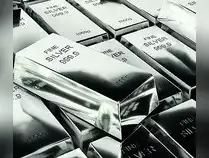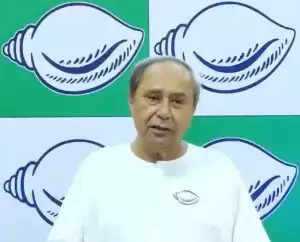Silver, often referred to as the "poor man's gold," has recently stolen the spotlight in global commodity markets. While silver has always played a dual role as both an investment asset and an industrial metal, recent developments have amplified its volatility and appeal.
Silver’s recent surge past ₹1,00,000/kg in India is a result of a complex interplay of increased geopolitical tensions, global supply constraints, rising industrial demand—especially from China—currency fluctuations, and monetary policy uncertainty.
The imbalance in supply and demand is affecting the silver prices in global markets. On the supply side, mining output has remained relatively stagnant due to environmental regulations, labour shortages, and geopolitical tensions in key mining regions such as Latin America. Meanwhile, demand has surged, driven by both industrial applications and investment interest.
Silver is a critical component in electronics, solar panels, and electric vehicles. As the world accelerates its transition to green energy, demand for silver has intensified. The solar industry alone accounts for nearly 15% of global silver consumption, and with countries ramping up renewable energy targets, this figure is expected to grow.
China’s demand for industrial metals has largely influenced global silver prices. Despite economic slowdowns in certain sectors, China’s push for technological advancement and green infrastructure has kept industrial demand for silver robust. The country’s aggressive expansion in solar energy and 5G technology has led to increased silver imports, tightening global supply chains.
There are also reports that Chinese investors are using silver as a hedge against domestic economic uncertainty and currency devaluation. This dual demand—from industry and investment—has added upward pressure on prices.
Silver, like gold, is priced in US dollars globally. A weaker dollar typically boosts silver prices, making it cheaper for holders of other currencies. However, the recent volatility in the dollar—driven by shifting expectations around the US Federal Reserve’s interest rate policy—has added complexity to silver’s price movements.
The Fed’s cautious stance on interest rate cuts, coupled with persistent inflation, has created uncertainty in financial markets. Investors seeking safe-haven assets have turned to precious metals, including silver, to hedge against inflation and currency risk. This has led to speculative buying, further fuelling price spikes.
In India, silver’s rise has been compounded by the depreciation of the rupee against the dollar. A weaker rupee makes imported commodities like silver more expensive, pushing domestic prices higher. Additionally, inflationary pressures and geopolitical uncertainties have driven Indian investors toward precious metals as a store of value.
Silver’s affordability compared to gold has also made it a preferred choice for retail investors and jewellers. However, with prices now exceeding ₹1,00,000/kg, affordability is becoming a concern, potentially dampening demand in the near term.
The current silver rally is marked by high volatility. Prices have seen sharp intraday movements, reflecting the tug-of-war between bullish industrial demand and bearish macroeconomic signals. Looking ahead, while the long-term outlook remains positive, short-term corrections are likely as markets digest economic data and central bank signals.
For investors, silver offers both opportunity and risk. Its industrial utility ensures long-term demand, but its sensitivity to economic cycles and monetary policy makes it prone to sharp swings. Diversification and cautious entry points are key strategies in navigating this volatile asset.
Silver’s recent surge past ₹1,00,000/kg in India is a result of a complex interplay of increased geopolitical tensions, global supply constraints, rising industrial demand—especially from China—currency fluctuations, and monetary policy uncertainty.
The imbalance in supply and demand is affecting the silver prices in global markets. On the supply side, mining output has remained relatively stagnant due to environmental regulations, labour shortages, and geopolitical tensions in key mining regions such as Latin America. Meanwhile, demand has surged, driven by both industrial applications and investment interest.
Silver is a critical component in electronics, solar panels, and electric vehicles. As the world accelerates its transition to green energy, demand for silver has intensified. The solar industry alone accounts for nearly 15% of global silver consumption, and with countries ramping up renewable energy targets, this figure is expected to grow.
China’s demand for industrial metals has largely influenced global silver prices. Despite economic slowdowns in certain sectors, China’s push for technological advancement and green infrastructure has kept industrial demand for silver robust. The country’s aggressive expansion in solar energy and 5G technology has led to increased silver imports, tightening global supply chains.
There are also reports that Chinese investors are using silver as a hedge against domestic economic uncertainty and currency devaluation. This dual demand—from industry and investment—has added upward pressure on prices.
Silver, like gold, is priced in US dollars globally. A weaker dollar typically boosts silver prices, making it cheaper for holders of other currencies. However, the recent volatility in the dollar—driven by shifting expectations around the US Federal Reserve’s interest rate policy—has added complexity to silver’s price movements.
The Fed’s cautious stance on interest rate cuts, coupled with persistent inflation, has created uncertainty in financial markets. Investors seeking safe-haven assets have turned to precious metals, including silver, to hedge against inflation and currency risk. This has led to speculative buying, further fuelling price spikes.
In India, silver’s rise has been compounded by the depreciation of the rupee against the dollar. A weaker rupee makes imported commodities like silver more expensive, pushing domestic prices higher. Additionally, inflationary pressures and geopolitical uncertainties have driven Indian investors toward precious metals as a store of value.
Silver’s affordability compared to gold has also made it a preferred choice for retail investors and jewellers. However, with prices now exceeding ₹1,00,000/kg, affordability is becoming a concern, potentially dampening demand in the near term.
The current silver rally is marked by high volatility. Prices have seen sharp intraday movements, reflecting the tug-of-war between bullish industrial demand and bearish macroeconomic signals. Looking ahead, while the long-term outlook remains positive, short-term corrections are likely as markets digest economic data and central bank signals.
For investors, silver offers both opportunity and risk. Its industrial utility ensures long-term demand, but its sensitivity to economic cycles and monetary policy makes it prone to sharp swings. Diversification and cautious entry points are key strategies in navigating this volatile asset.
(The author is Head of Commodities, Geojit Investments Ltd)
(Disclaimer: The opinions expressed in this column are that of the writer. The facts and opinions expressed here do not reflect the views of www.economictimes.com.)








